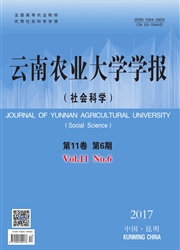

 中文摘要:
中文摘要:
灰霉病是非洲菊切花破坏性的病害,在采后阶段的发生和危害尤其严重,培育抗性品种具有重要意义,抗性非洲菊材料的筛选鉴定是抗性品种培育的必要技术。以生产中显著抗病和感病品种为试材,研究非洲菊灰霉病抗性鉴定技术中适宜的试验材料、灰霉菌孢子浓度、孢子侵染条件和病害评估方法。结果表明,非洲菊花瓣正面接种病害发展快、不同抗性品种间差异明显;分生孢子的侵染萌发需要充足的氧气和营养,2μL液滴、马铃薯葡萄糖的添加使花瓣发病整齐均匀;病菌的增殖危害与接种时分生孢子和马铃薯葡萄糖的初始浓度相关,在一定浓度范围内,二者呈反比关系,其中分生孢子适宜浓度为3.0 × 10^5 - 1.0 ×10^6个孢子/mL,马铃薯葡萄糖的适宜浓度为3% ~6%;接种花瓣放置于室温、自然光、近100%湿度条件下,接种48h是最佳的评估时间。
 英文摘要:
英文摘要:
In cut Gerbera, grey mould caused by Botrytis cinerea is a very destructive disease, especially in the postharvest stage. Application of cultivar resistant is a strategic way. A simple and efficient Botrytis test is very necessary for resistant variety breeding. In this study, resistant and susceptible cultivars were selected to identify the best material, spore concentration, infection conditions and evaluation method in Botrytis test of Gerbera. The results showed: Botrytis disease developed fast, and the difference in the resistant and susceptible materials was significant when upside of petals was inoculated; oxygen and nutrition was necessary for spore germination; 2 μL drop and potato dextrose (PD) made the development of disease on the petal quick and uniform ; initial spore and PD had a reverse relationship, 3.0 × 10^5 - 1.0 ×10^6 spores/mL and 3% -6% PD was suitable concentration respectively; 48 h after inoculation was the best time for evaluation, the condition of disease development was natural light, room temperature, nearly 100% relative humility.
 同期刊论文项目
同期刊论文项目
 同项目期刊论文
同项目期刊论文
 期刊信息
期刊信息
